 "ttyymmnn" (ttyymmnn)
"ttyymmnn" (ttyymmnn)
05/26/2015 at 11:05 • Filed to: planelopnik, planelopnik history
 38
38
 92
92
 "ttyymmnn" (ttyymmnn)
"ttyymmnn" (ttyymmnn)
05/26/2015 at 11:05 • Filed to: planelopnik, planelopnik history |  38 38
|  92 92 |
This is today’s Aviation History Speed Round , getting you caught up on milestones and important historical events in aviation from May 23 through May 26.
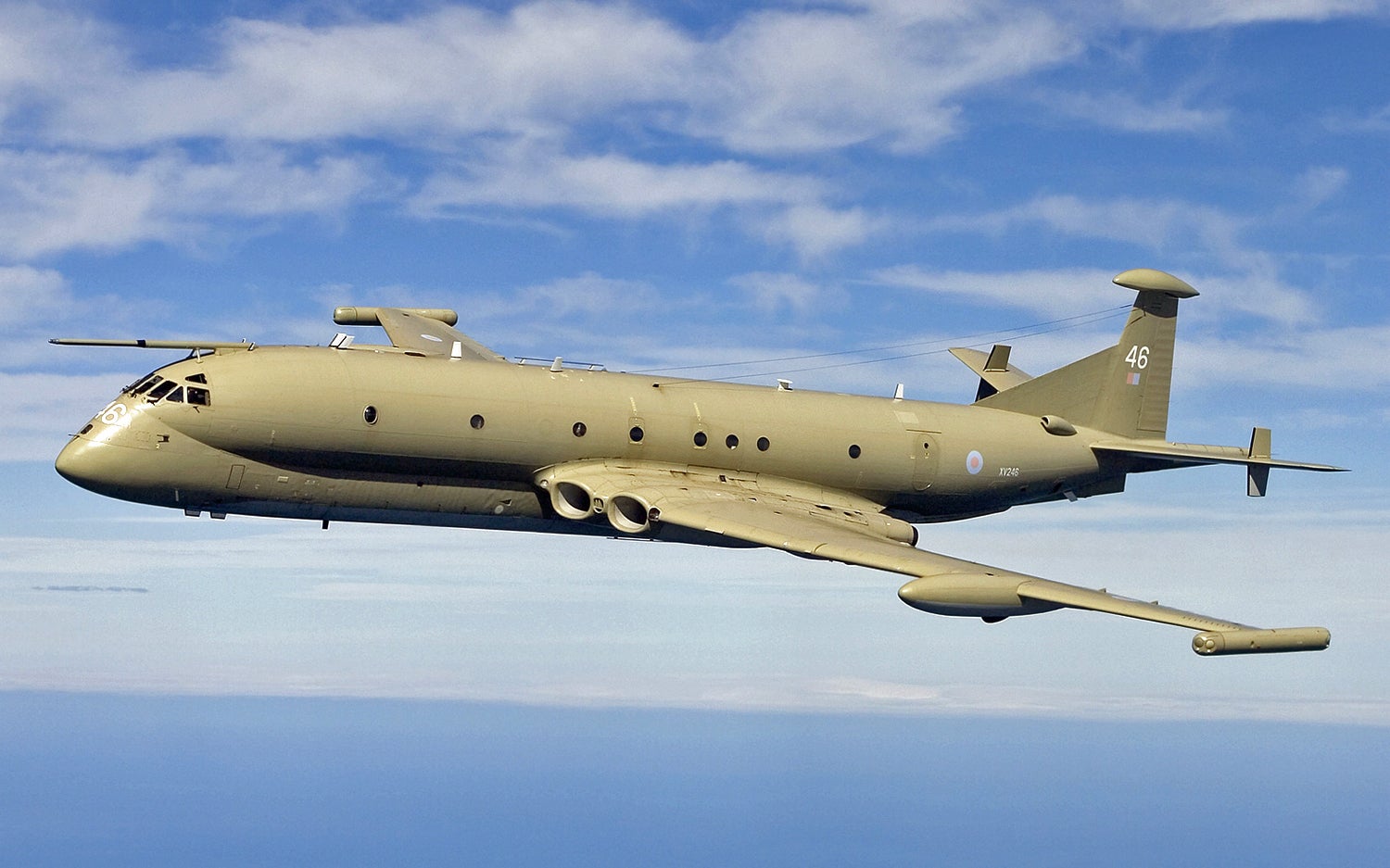
May 23, 1967 – The first flight of the Hawker Siddeley Nimrod. In 1964, the British Government began the search for a replacement for the aging !!!error: Indecipherable SUB-paragraph formatting!!! to take over the role of anti-submarine warfare (ASW), maritime surveillance and anti-surface warfare. The first two prototypes were built on the unfinished airframes of Comet 4 airliners, with the turbojet engines replaced by Rolls-Royce Spey turbofans, included an altered fuselage to make room for an internal weapons bay, an enlarged nose for a larger radar, a new tail with built-in electronic warfare sensors, and a magnetic anomaly detector boom was added to the rear. A total of forty-nine Nimrods were built, and they saw service in the Falklands War, the Gulf War, Afghanistan and Iraq. The Nimrod was retired in 2011 after initial plans for an updated Nimrod were abandoned.
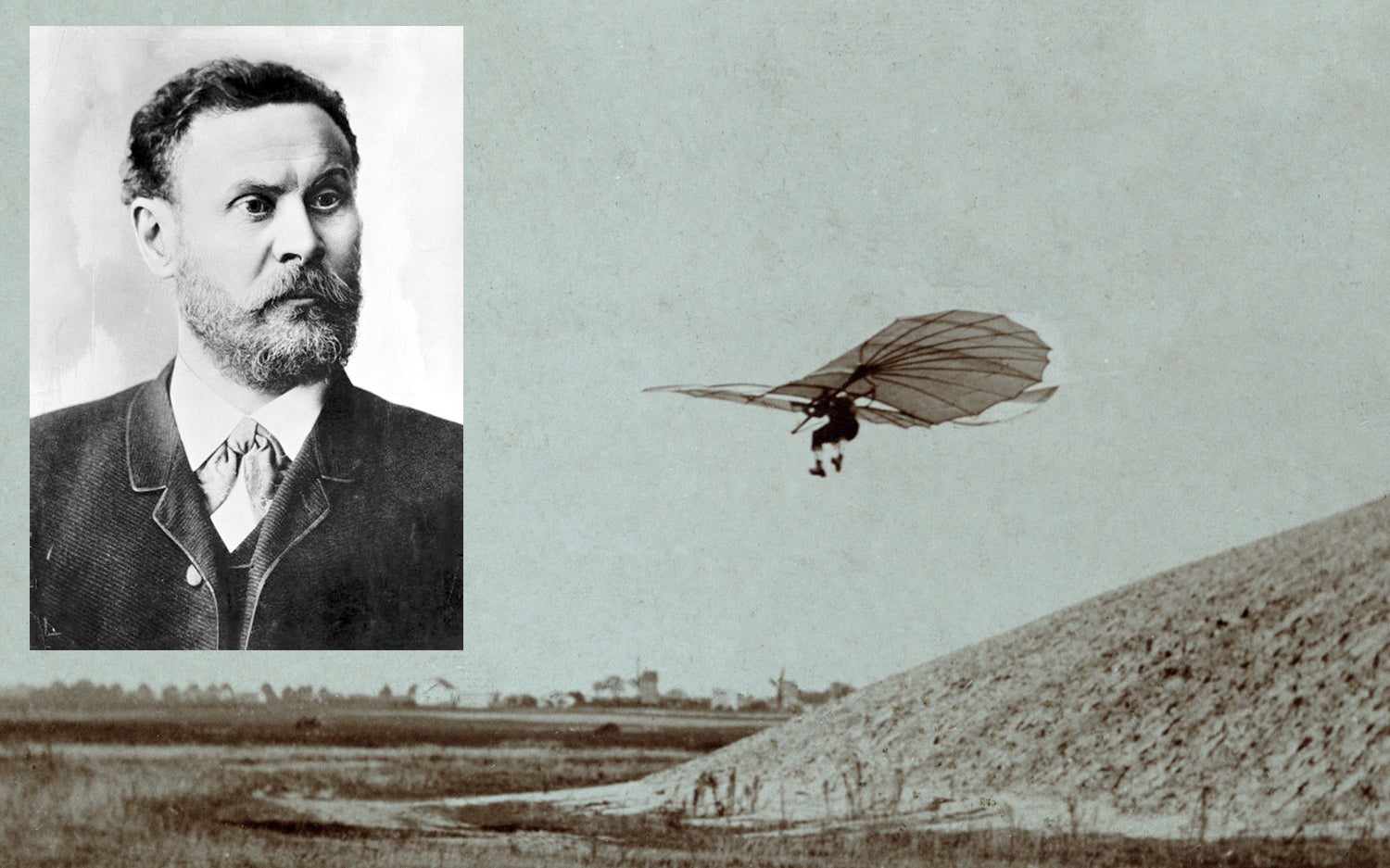
May 23, 1848 – The birth of Otto Lillienthal. An early and influential pioneer of manned flight, Otto Lillienthal was known as the Glider King for his experiments with and development of unpowered glider flight. Lillienthal worked closely with his brother Gustav and made over 2,000 flights beginning in 1891, some of which covered distances of over 800 feet. While all those flights only accounted for five hours of actual flying, Lillienthal’s influence on the history of aviation far outstripped his hours in the air, and the notoriety he garnered not only popularized the idea of future powered flight, but also influenced the early work of the Wright Brothers and other aviation pioneers. Lillenthal was killed in the crash of one of his gliders when he entered an unrecoverable stall at an altitude of about 50 feet, breaking his neck in the subsequent crash.
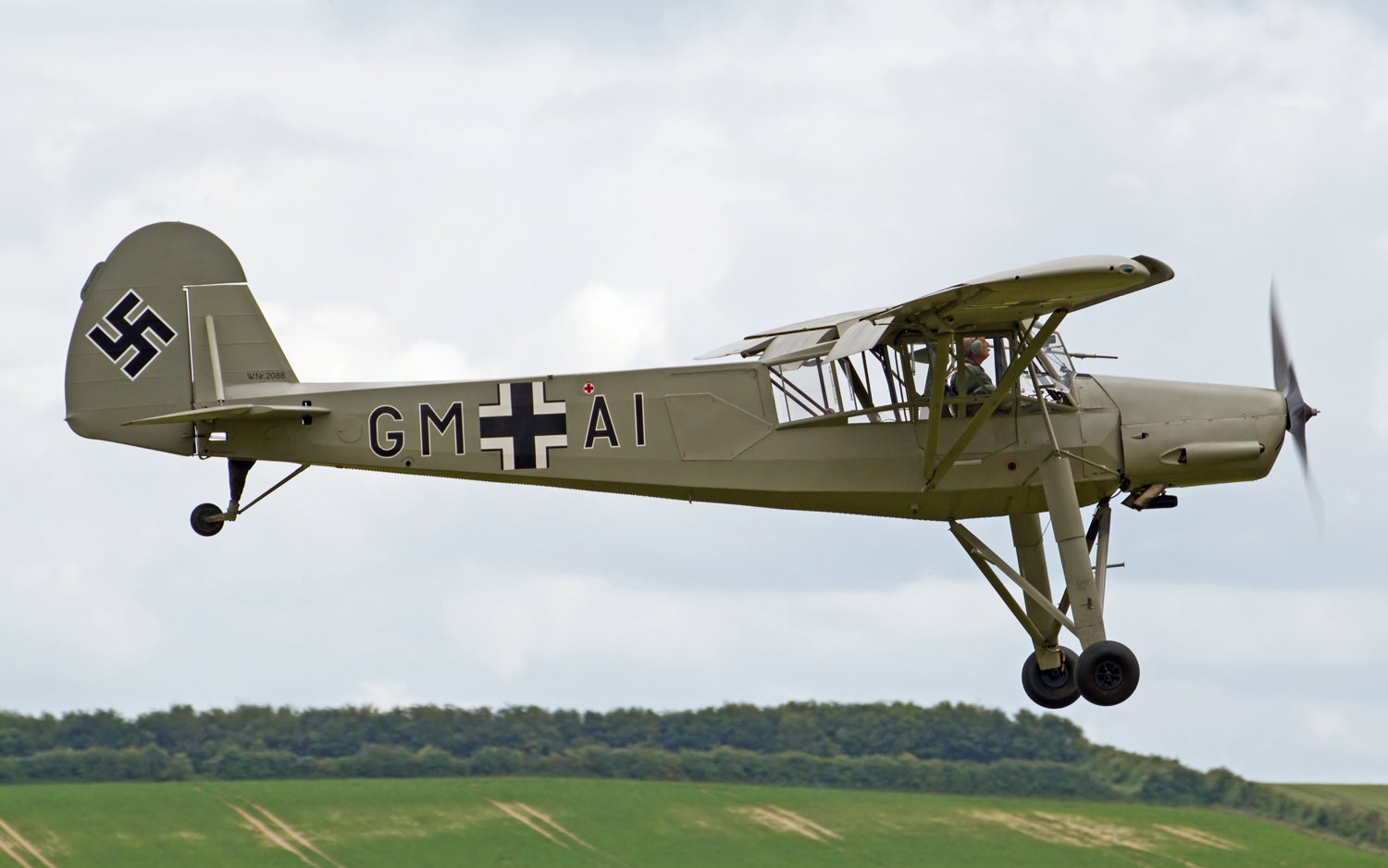
May 24, 1936 – The first flight of the Fieseler Storch . In the 1930s, the Reich Aviation Ministry sought designs for a small aircraft suitable for liaison, forward air control and medevac duties. The Fiesseler Storch was selected over the other contenders because of its outstanding short takeoff and landing (STOL) characteristics and other thoughtful design elements such as folding wings that made the Storch easy to tow or transport, and long landing gear with shock absorbers for operations from crude runways. The Storch gained fame for its role in the rescue of ousted Italian Prime Minister Benito Mussolini from the rocky mountaintop ski resort of San Grasso in !!!error: Indecipherable SUB-paragraph formatting!!! in 1943. Mussolini had been arrested and held in the mountaintop hotel, but was rescued by German gliderborne paratroops and flown off the rock-strewn mountaintop by a Storch , the only aircraft capable of operating from the site.
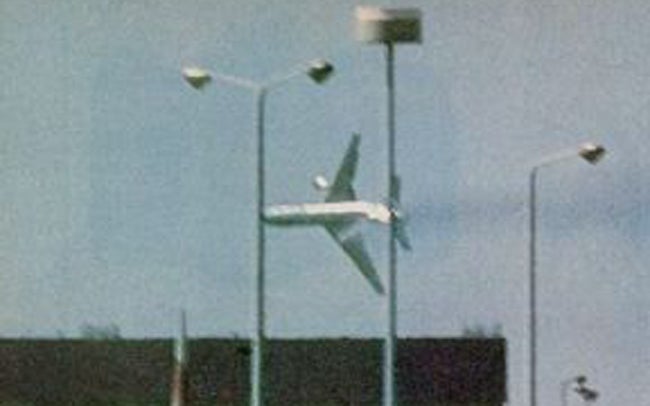
May 25, 1979 – The crash of American Airlines Flight 191. American Airlines Flight 191 was a regularly scheduled flight from Chicago’s O’Hare International Airport to Los Angeles International Airport. During takeoff, the left engine of the McDonnell Douglas DC-10-10 separated from the wing, severing hydraulic lines, damaging the left wing’s leading edge, and causing an uncommanded retraction of the leading edge slats. As the aircraft continued to takeoff, the unbalanced configuration of the wing slats caused the left wing to stall while the right wing was still providing lift and the aircraft rolled to the left until partially inverted and crashed in a nearby field. All 258 passengers and 13 crew members were killed, as well as 2 people on the ground, and it remains the deadliest aviation accident on US soil. The engine separation was found to have been caused by faulty maintenance practices performed by American Airlines, and not a design defect. American Airlines was fined $500,000 for improper maintenance procedures.
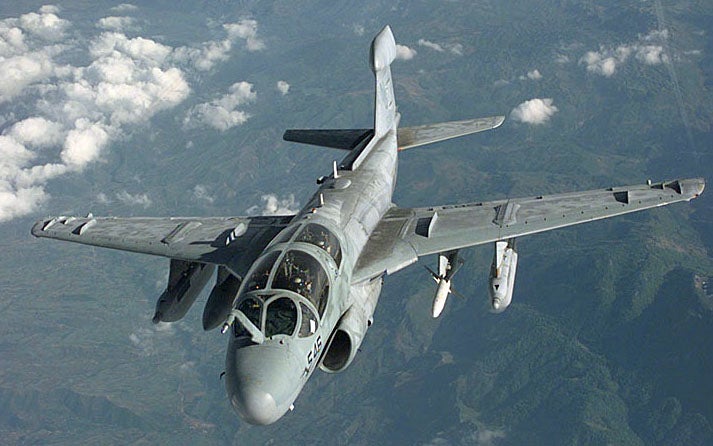
May 25, 1968 – The first flight of the Northrop Grumman EA-6B Prowler. The Prowler concept began in the 1960s as a replacement for the !!!error: Indecipherable SUB-paragraph formatting!!! , and was based on the successful !!!error: Indecipherable SUB-paragraph formatting!!! attack plane airframe, stretched to add a second row of seating for electronics warfare officers. Development of the purpose-built EA-6B began in 1966 to replace the !!!error: Indecipherable SUB-paragraph formatting!!! then in service with the Navy. Among other developments, the fuselage was lengthened and an antenna fairing was added to the vertical stabilizer. Introduced in 1971, EA-6B Prowlers were active in the Vietnam War, flying 720 sorties in support of Navy bombers and USAF B-52s, and also served in Grenada, Afghanistan, Iraq and Syria. The Prowler is in its last year of service, as the Navy completes the phase out of the EA-6B in favor of the newer !!!error: Indecipherable SUB-paragraph formatting!!! .
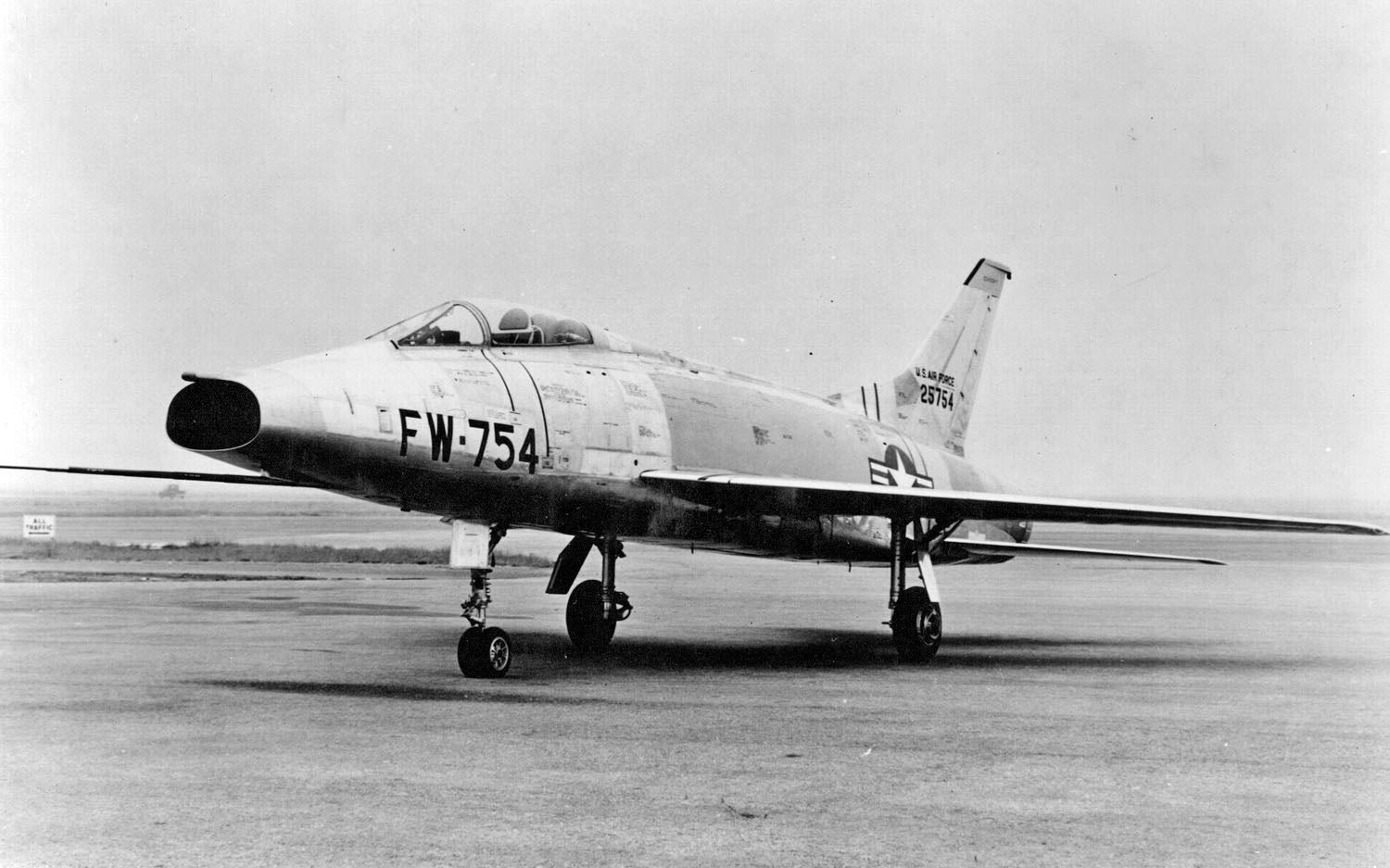
May 25, 1953 – The first flight of the North American F-100 Super Sabre. North American developed the Super Sabre as an unsolicited upgrade to the !!!error: Indecipherable SUB-paragraph formatting!!! , hoping to provide the Air Force with a day fighter capable of sustained supersonic speeds. The F-100 featured a 45-degree swept wing, as well as over 100 additional upgrades and design changes, including the first widespread use of titanium in its structure, and was delivered to the Air Force in 1951, which accepted it immediately due to delays in production of the !!!error: Indecipherable SUB-paragraph formatting!!! . Nicknamed “The Hun,” it was the first of the so-called Century Series fighters, and was the first Air Force fighter capable of supersonic speeds in level flight. The F-100 saw extensive action in Vietnam, serving from 1961 to 1971, the longest-serving fighter bomber of the war. The Hun set numerous speed records, won the Bendix Trophy in 1955, was the first jet fighter to fly over the North Pole, and was flown by the USAF Thunderbirds from 1956 to 1968. Just under 2,300 Super Sabres were produced, and it was retired from frontline service in 1979, though it continued serving with Air National Guard units until 1988.
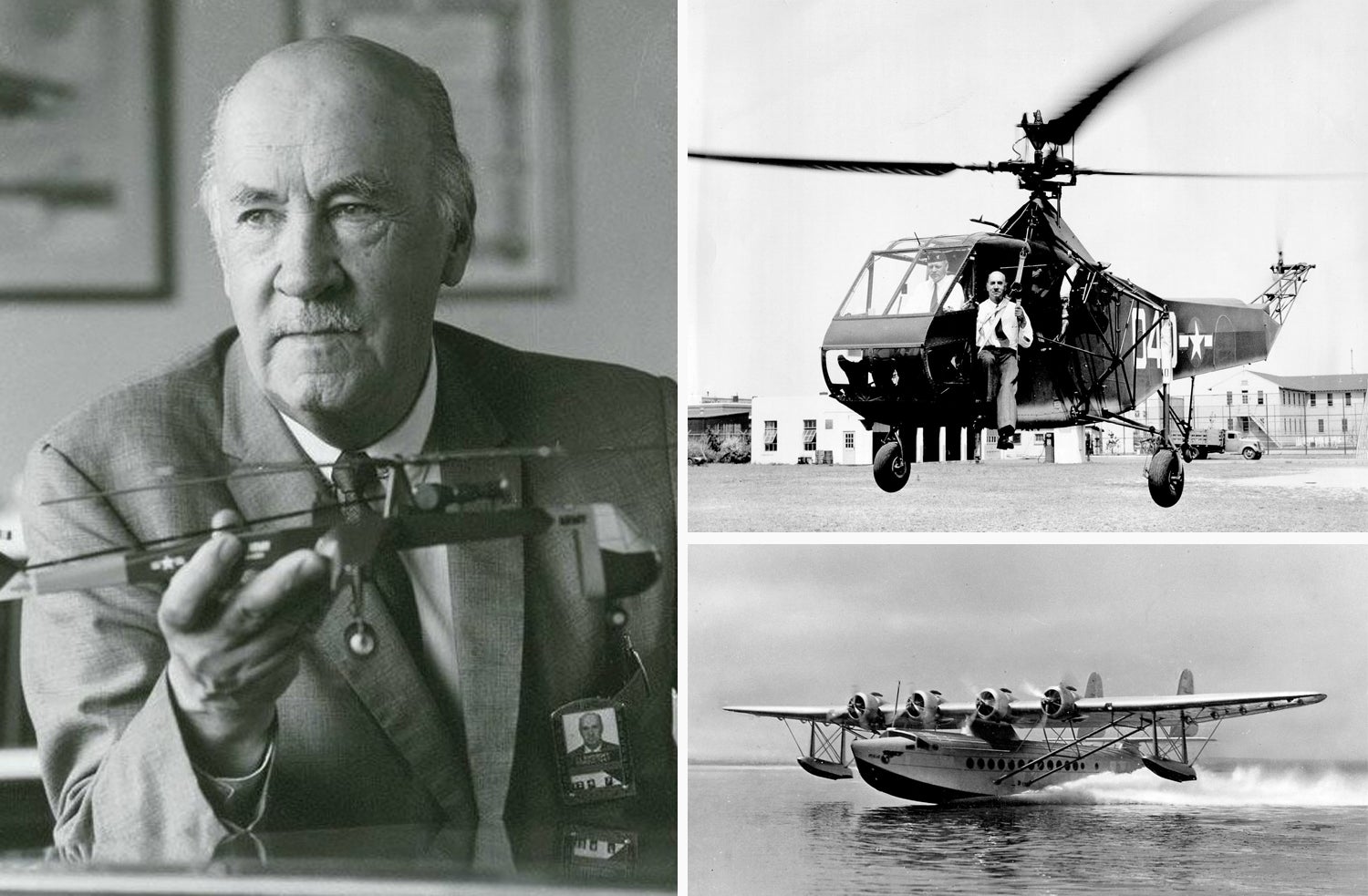
May 25, 1889 – The birth of Igor Sikorsky. Russian-born Igor Sikorsky is best known for the development of one of the first successful helicopters, but he started his career as a designer of fixed-wing aircraft. He is also notable for being the primary test pilot for most of the aircraft he designed. Before emigrating to the United States in 1919, he designed and flew the !!!error: Indecipherable SUB-paragraph formatting!!! , the world’s first multi-engine fixed-wing aircraft, and the !!!error: Indecipherable SUB-paragraph formatting!!! , the world’s first airliner. After coming to the US, Sikorsky created the Sikorsky Aircraft Corporation in 1923 and produced the !!!error: Indecipherable SUB-paragraph formatting!!! for Pan American Airways. But it was in rotary-winged aircraft that Sikorsky made his greatest mark on aviation history, first with the !!!error: Indecipherable SUB-paragraph formatting!!! in 1939, the first helicopter to use a single engine to power both main and tail rotors, and the !!!error: Indecipherable SUB-paragraph formatting!!! , the world’s first production helicopter, in 1942.
Short Take Off
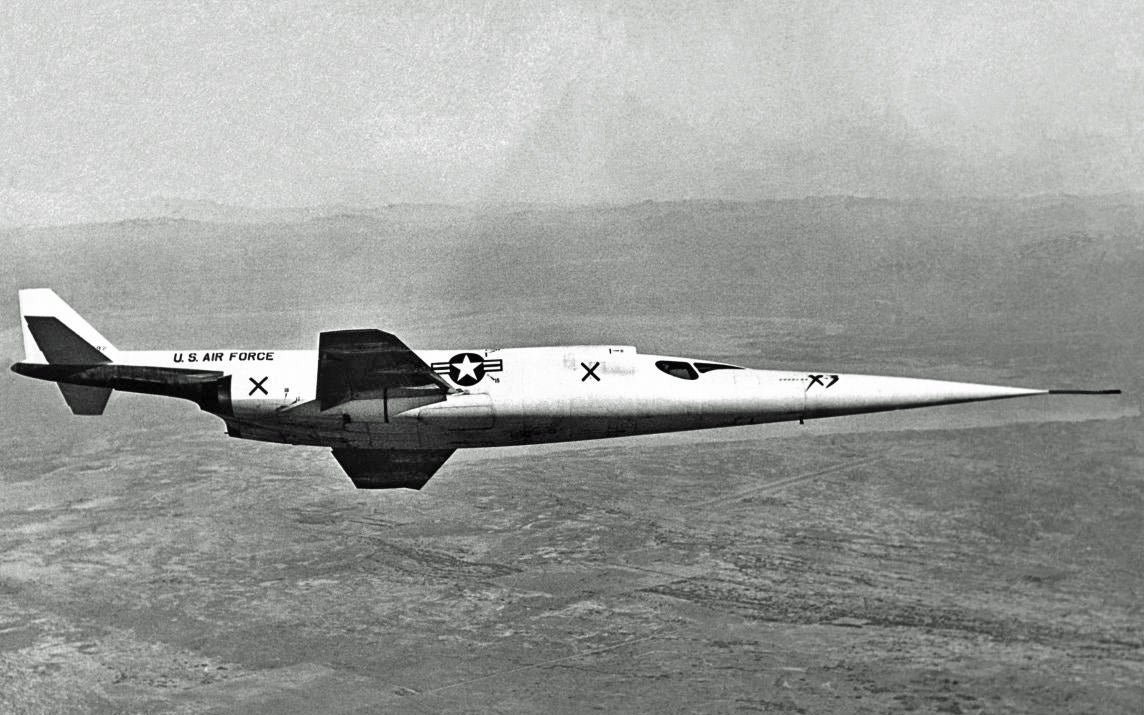
May 23, 1956 – The Douglas X-3 Stiletto is retired. Designed to investigate an aircraft suitable for sustained supersonic speeds, the X-3 never flew as fast as its designers hoped, but it provided useful data on supersonic aircraft design, as well as data for the wings of the !!!error: Indecipherable SUB-paragraph formatting!!! , which featured a similar trapezoidal wing.
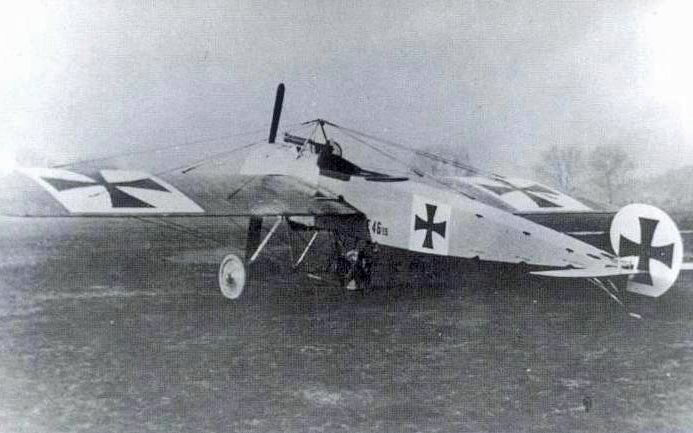
May 23, 1915 – The first flight of the Fokker Eindecker . Designed by Dutch engineer !!!error: Indecipherable SUB-paragraph formatting!!! , the Eindecker was the first purpose-built German fighter, and the first fighter to employ Fokker’s interrupter gear for firing through the arc of the propeller.
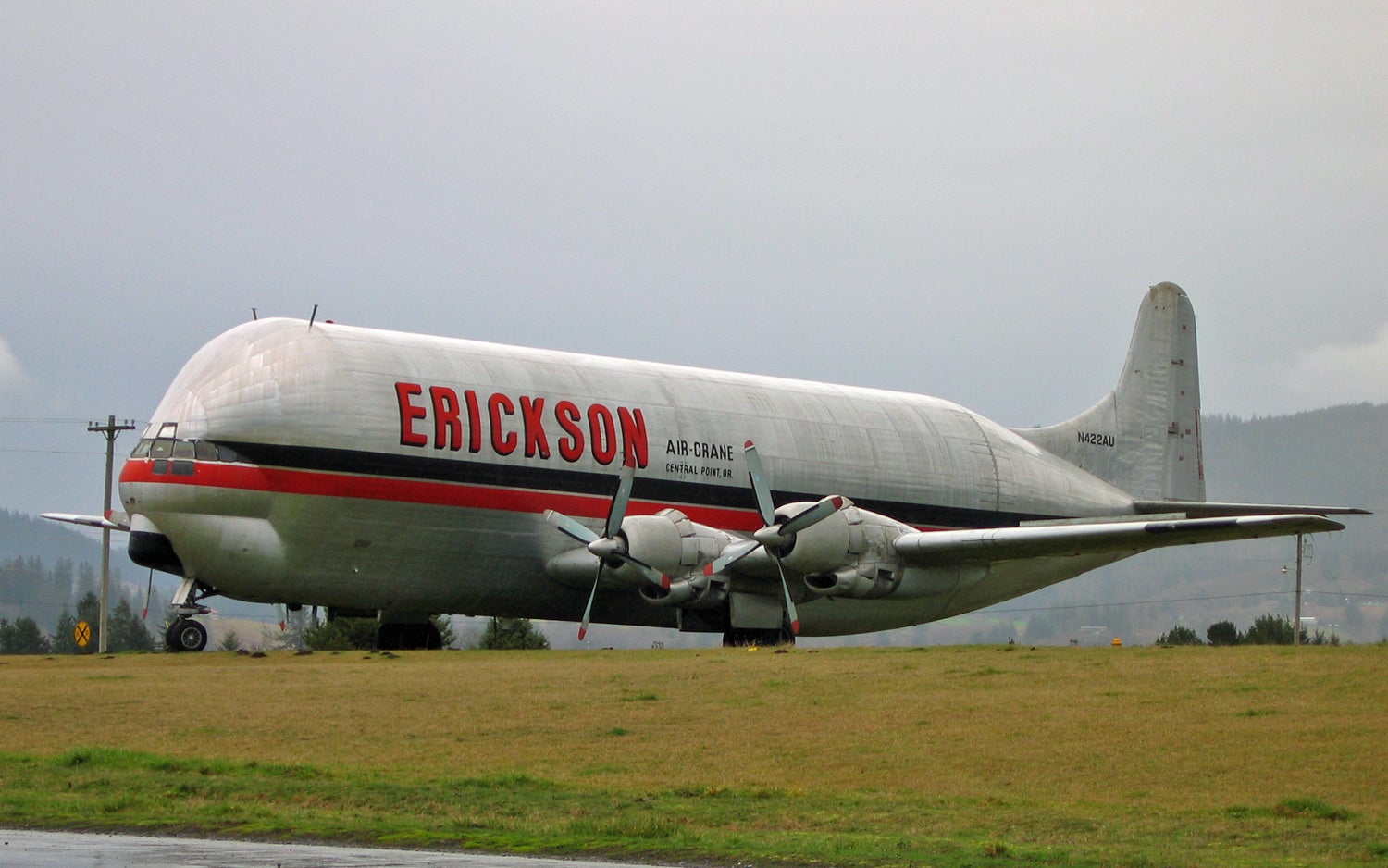
May 24, 1967 – The first flight of the Aero Spacelines Mini Guppy. Built from salvaged parts from a !!!error: Indecipherable SUB-paragraph formatting!!! , the Mini Guppy was used for oversized cagro transport. Two were built.
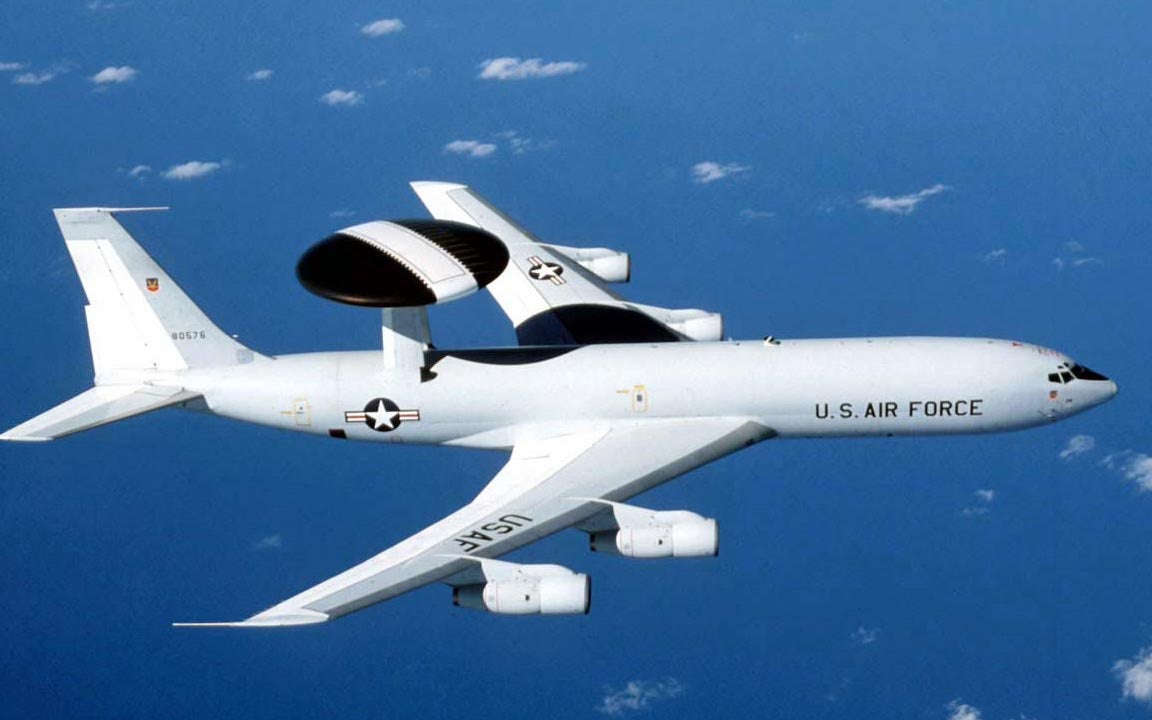
May 25, 1976 – The first flight of the Boeing E-3 Sentry. Commonly know as AWACS (Airborne Early Warning and Control), the E-3 was derived from the Boeing 707 and provides all-weather surveillance, command, control and communications for the US and its NATO allies, as well as the Royal Saudi Air Force. Sixty-eight aircraft had been built when production ended in 1992.
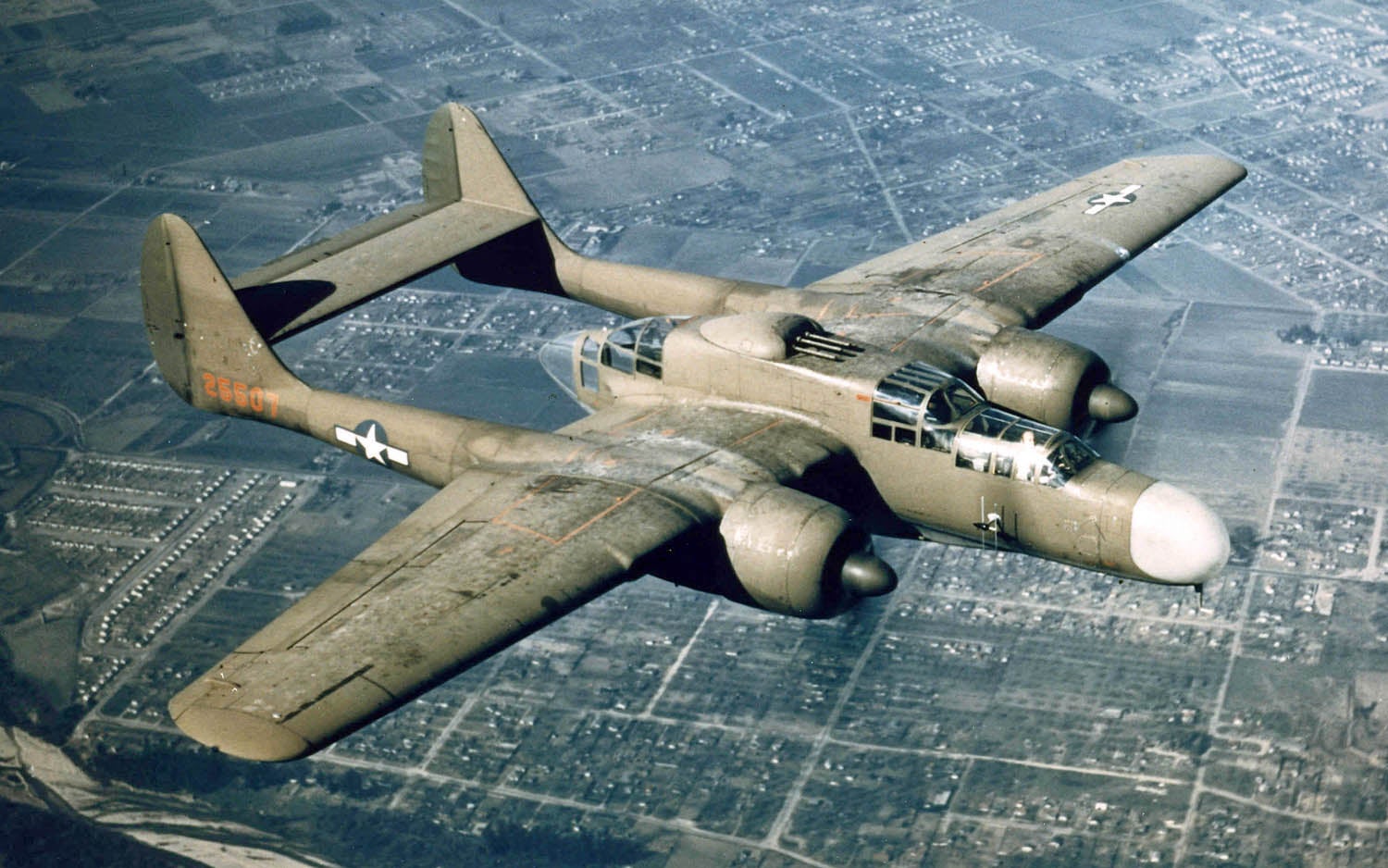
May 26, 1942 – The first flight of the Northrop XP-61 Black Widow prototype , the first operational, purpose-built American night fighter and the first American warplane designed specifically to employ radar.
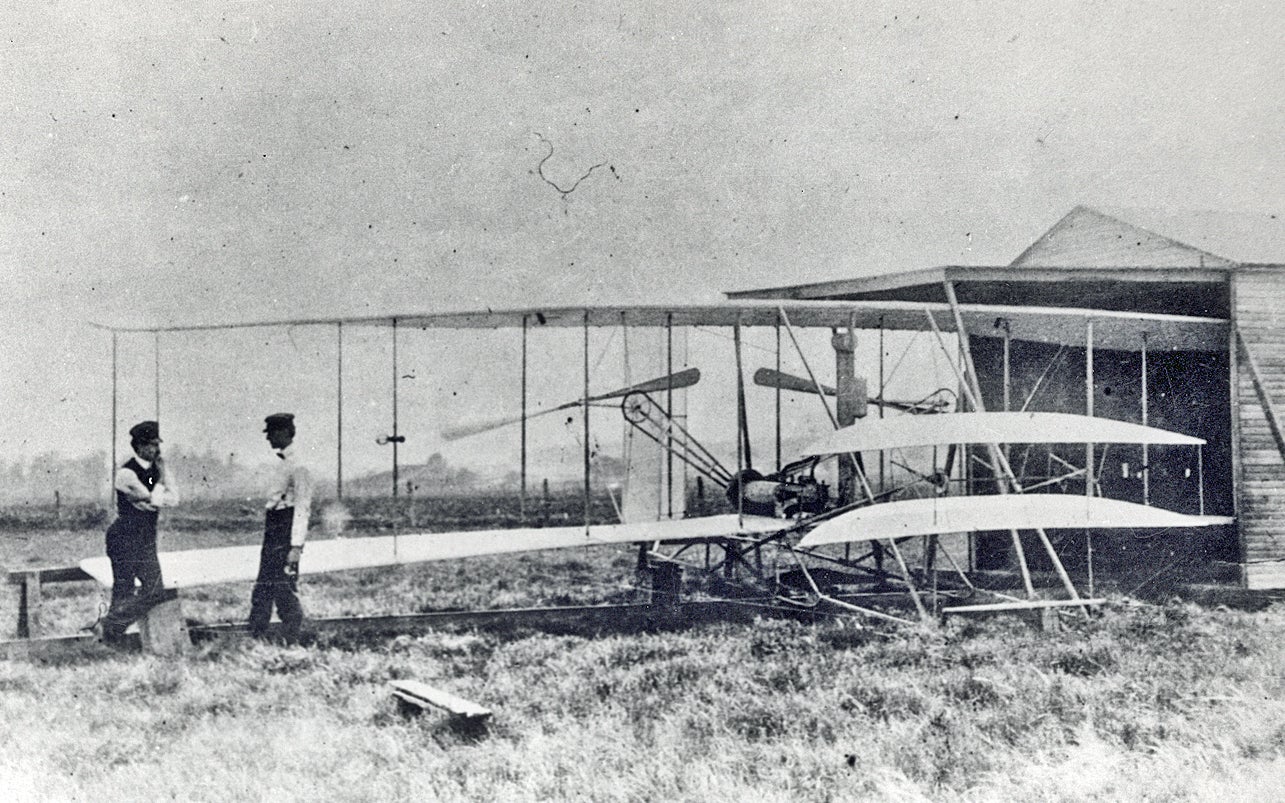
May 26, 1904 – The first successful flight of the Wright Flyer II , the second powered airplane built by the Wright Brothers. In 105 test flights, the Wright Brothers achieved flights of up to 5 minutes in length and the flights incorporating complete circles.
••••••••••••••••••••••
If you enjoy these Planelopnik History posts, please let me know in the comments. And if you missed any of the past articles, you can find them all at !!!error: Indecipherable SUB-paragraph formatting!!! .
 For Sweden
> ttyymmnn
For Sweden
> ttyymmnn
05/26/2015 at 11:24 |
|
The engine separation was found to have been caused by faulty maintenance practices performed by American Airlines, and not a design defect. American Airlines was fined $500,000 for improper maintenance procedures.
For anyone curious about what the improper procedure was, turbines being serviced were lifted by forklifts with no further solid support. These turbines would remain supported by forklifts overnight. If the forklift’s hydraulic system had any leak, the lift would settle, adding stress to the turbine’s support under the wing. Over time, this stress fatigues the support enough that it can no longer support the engine in flight.
 ttyymmnn
> For Sweden
ttyymmnn
> For Sweden
05/26/2015 at 11:39 |
|
Thanks for adding that. I can only include so much info in these posts. Apparently, McDD told American that they were doing it wrong, but there was no way for them to force AA to do it right. It seems that the cost for ignoring that advice was ultimately just $500k dollars. Compared to the money they saved doing it wrong, it may have turned out to have been a solid business decision by AA.
 For Sweden
> ttyymmnn
For Sweden
> ttyymmnn
05/26/2015 at 11:42 |
|
AA used to have a very bad safety reputation (they are fine now). At one point the NTSB wouldn’t even include them in investigations involving AA aircraft.
 Snuze: Needs another Swede
> ttyymmnn
Snuze: Needs another Swede
> ttyymmnn
05/26/2015 at 11:48 |
|
I love the P-61 Black Widow, it’s one of my favorite planes of WW-II.
 Brickman
> ttyymmnn
Brickman
> ttyymmnn
05/26/2015 at 11:54 |
|
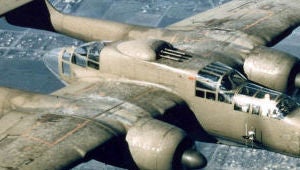
I see where George Lucas got the idea for the Arc 170 star fighter.
 Jcarr
> ttyymmnn
Jcarr
> ttyymmnn
05/26/2015 at 12:30 |
|
Well-earned share to the FP!
Long live Planelopnik!
 Jcarr
> For Sweden
Jcarr
> For Sweden
05/26/2015 at 12:33 |
|
If I remember right, weren’t they removing the engine and pylon as a single unit because it was much simpler than the recommended practice of removing the engine from the pylon?
 Drakkon- Most Glorious and Upright Person of Genius
> ttyymmnn
Drakkon- Most Glorious and Upright Person of Genius
> ttyymmnn
05/26/2015 at 12:34 |
|
Doin’ what wrong, exactly?

I know what I’m doin’. You go mind your own business. You build the airplanes. I’ll do the flyin’
 ttyymmnn
> Jcarr
ttyymmnn
> Jcarr
05/26/2015 at 12:38 |
|
Thanks! I’m thrilled. Now I’ve got to get busy on Friday’s post....
 ttyymmnn
> Jcarr
ttyymmnn
> Jcarr
05/26/2015 at 12:39 |
|
Exactly. And since they were removing the engine and pylon as a unit, it placed uneven stress on the pylon wing mounts. I think I read that all of the AA DC-10s showed similar damage, and it was probably just a matter of time before this happened to another plane. The carriers that were following McDD’s prescribed maintenance routine did not have the same problem.
 365Daytonafan
> ttyymmnn
365Daytonafan
> ttyymmnn
05/26/2015 at 12:42 |
|
$500k plus the cost of a DC10 and presumably significant compensation payments to relatives of the passengers and crew?
 ttyymmnn
> 365Daytonafan
ttyymmnn
> 365Daytonafan
05/26/2015 at 12:45 |
|
Of course. But when you have a governmental agency (the FAA) whose job is to both police and promote the industry, it seems like fines and the like are rather small in these cases.
 WarShrike
> Snuze: Needs another Swede
WarShrike
> Snuze: Needs another Swede
05/26/2015 at 13:03 |
|
If I recall correctly, it also has the last confirmed air kill of WWII.
 Davos Swinney
> ttyymmnn
Davos Swinney
> ttyymmnn
05/26/2015 at 13:20 |
|
Do you do this every week? Because this is awesome.
 Rusty Vandura - www.tinyurl.com/keepoppo
> ttyymmnn
Rusty Vandura - www.tinyurl.com/keepoppo
> ttyymmnn
05/26/2015 at 13:24 |
|
Nicely done, as usual.
 Rusty Vandura - www.tinyurl.com/keepoppo
> For Sweden
Rusty Vandura - www.tinyurl.com/keepoppo
> For Sweden
05/26/2015 at 13:24 |
|
For Sweden, do you work in the aviation industry?
 For Sweden
> Rusty Vandura - www.tinyurl.com/keepoppo
For Sweden
> Rusty Vandura - www.tinyurl.com/keepoppo
05/26/2015 at 13:24 |
|
Do you?
 JayHova
> Brickman
JayHova
> Brickman
05/26/2015 at 13:27 |
|
If you look at their weaponry,
Star Wars seems to ‘borrow heavily from exterior influences’.
 ttyymmnn
> Davos Swinney
ttyymmnn
> Davos Swinney
05/26/2015 at 13:29 |
|
Twice a week, Tuesday and Friday. I’ve been at it a few weeks now, more as a personal hobby project than anything else. It’s nice getting the bump to the FP, though (thanks, Michael!). I’m hoping to keep it going for a whole year. Being able to make scheduled posts really helps. I'm glad you like it! Thanks.
 shirosake
> ttyymmnn
shirosake
> ttyymmnn
05/26/2015 at 13:45 |
|
Awesome post! This should be crossed to Foxtrot Alpha. Its worthy of gracing the pages of that blog.
 ttyymmnn
> shirosake
ttyymmnn
> shirosake
05/26/2015 at 13:47 |
|
Thanks. I appreciate that. This has been very much a labor of love, and I'm grateful to Michael for sharing it to a wider audience.
 Rusty Vandura - www.tinyurl.com/keepoppo
> For Sweden
Rusty Vandura - www.tinyurl.com/keepoppo
> For Sweden
05/26/2015 at 13:55 |
|
No. I am a 7th grade math teacher in California. I come to Oppo by way of Mr. Ttyymmnn, whose sons are my nephews.
 Cé hé sin
> ttyymmnn
Cé hé sin
> ttyymmnn
05/26/2015 at 14:10 |
|
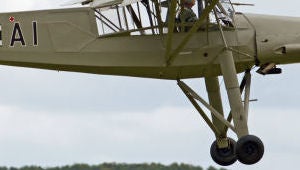
Oooh, a Storch!
I think they’re kind of cute. You can see where they got the name too.
 marimvibe, new packaging, same great taste
> ttyymmnn
marimvibe, new packaging, same great taste
> ttyymmnn
05/26/2015 at 14:10 |
|
To be fair, these cases tend to be few and far between. The industry as a whole is very, very safety conscious, and most I’ve encountered (at least on the engineering side) make decisions as if their kids’ lives could be at stake. None I’ve worked with have actively argued to do something that would result in a less safe product, even if it would be financially beneficial to do so.
 ttyymmnn
> marimvibe, new packaging, same great taste
ttyymmnn
> marimvibe, new packaging, same great taste
05/26/2015 at 14:15 |
|
I would agree that, by and large, the aviation industry is extraordinarily safe, and I have no qualms whatsoever about putting myself or my family on a jet plane (I might think twice in some Third World countries, though). But that was not always the case, as pointed out above by For Sweden. And yes, these cases are rare, but this is a case of an airline ignoring the best practices established by the manufacturer in the interest of saving time and money. They cut corners, and lost. I am certainly not making an indictment against the industry as a whole, but a lot has changed in 30 years.
 ttyymmnn
> Cé hé sin
ttyymmnn
> Cé hé sin
05/26/2015 at 14:17 |
|
Absolutely. I came across this photo some years ago and saved it. I think it’s fascinating.
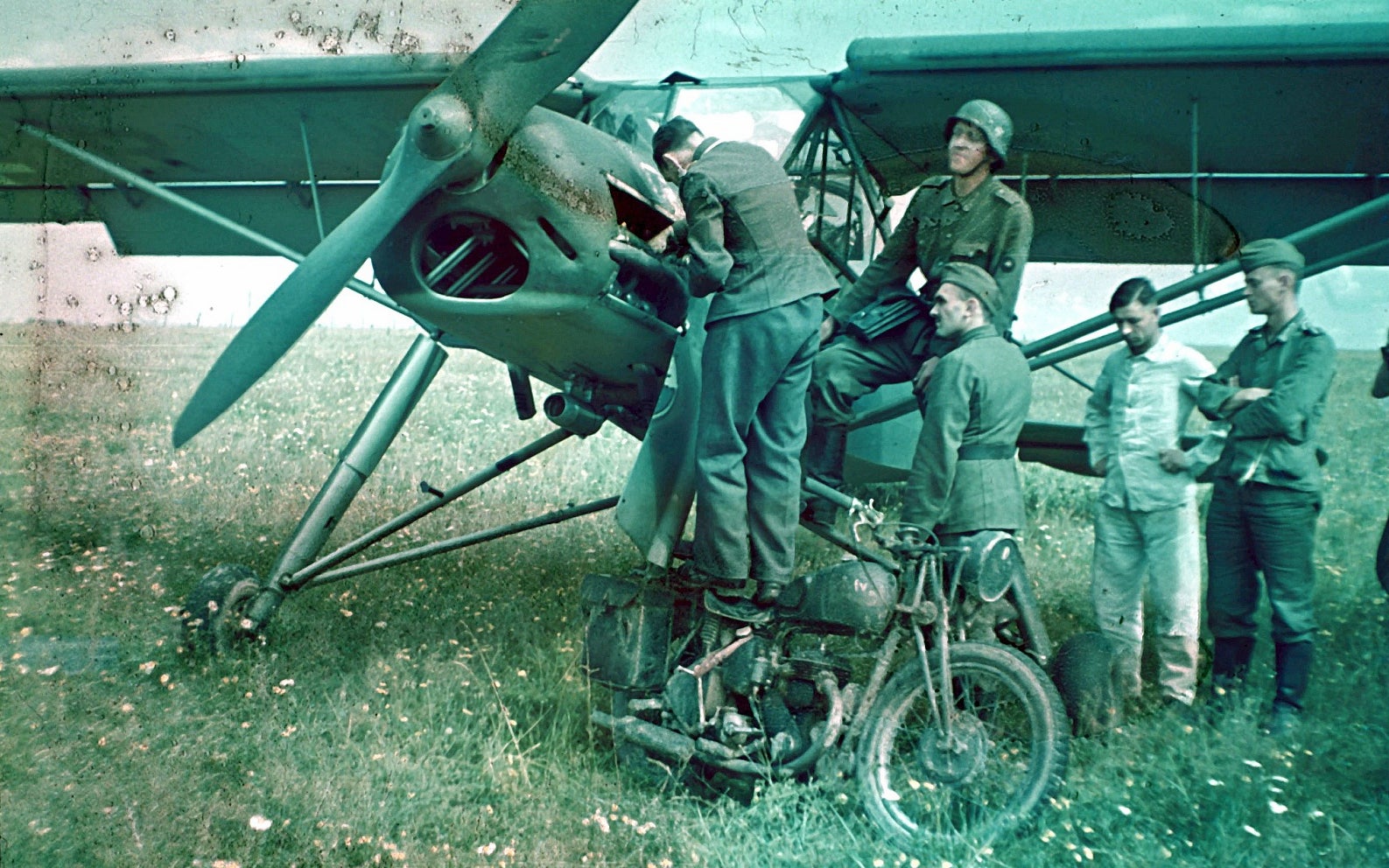
 You can tell a Finn but you can't tell him much
> ttyymmnn
You can tell a Finn but you can't tell him much
> ttyymmnn
05/26/2015 at 14:26 |
|
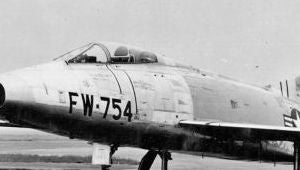
The Hun did have a bit of a problem with the hydraulics system at one point. John Boyd destroyed an airframe when he had to eject during training exercises. A complete hydraulic system failure made the plane unflyable so he ejected. Since he had more than a few high ranking enemies in the Pentagon he was being drummed out of the Air Force for that since they claimed it was his negligence that caused the loss of the airplane. He bet the brass his job, said “pick a plane, any plane, put it on the test stand and I’ll break it.” Of course the brass cherry picked the plane and had it set up. He hopped in, did his thing and hopped out a few seconds later. Before he could get out of the airplane all the hydraulic fluid was leaking onto the floor.
His biography makes for a fascinating read. http://www.amazon.com/Boyd-The-Fight…
 ttyymmnn
> You can tell a Finn but you can't tell him much
ttyymmnn
> You can tell a Finn but you can't tell him much
05/26/2015 at 14:29 |
|
The Super Sabre was by no means a perfect airplane, and the fact that the AF basically ordered it off the drawing board only set it up for teething problems. Thanks for the info and the link. I’m nuts for that era of aviation, and it looks like a good read.
 MarkT61
> ttyymmnn
MarkT61
> ttyymmnn
05/26/2015 at 15:25 |
|
Nimrod wasn’t replaced by E-3 Sentry, they do very different jobs. Nimrod was maritime patrol, hence the magnetic anomaly detector. Sentry is airborne early warning and control (AWACS). It entered RAF service in 1987 so a good while before the Nimrod saga ended.
There were 3 (possibly 4) versions of Nimrod; MR1 & MR2 were the classic maritime patrol, R1 for electronic surveillance and AEW3 for airborne early warning. This was cancelled in favor of the E-3 Sentry. The Nimrod R1 gap is being filled by the in process acquisition of RC-135 Rivet Joint. The fourth Nimrod variant MRA4 was cancelled in 2010 due to huge cost overruns and technical problems.
The UK currently has no dedicated maritime patrol aircraft but this is expected to change in the near future with the Boeing P-8 Poseidon appearing to be front runner.
 Jcarr
> ttyymmnn
Jcarr
> ttyymmnn
05/26/2015 at 15:27 |
|
Have you ever seen one in person?
An F-model is coming to Oshkosh this year (along with an essentially mint, stock FG-1D) and I am so excited.
 ttyymmnn
> MarkT61
ttyymmnn
> MarkT61
05/26/2015 at 15:30 |
|
Thanks for the additional information. It can be very difficult to boil down so much information into such a confined space. Thanks for reading and commenting.
 MonkeePuzzle
> ttyymmnn
MonkeePuzzle
> ttyymmnn
05/26/2015 at 15:31 |
|
front paged! congrats on you’re as usual well written and interesting piece
 ttyymmnn
> Jcarr
ttyymmnn
> Jcarr
05/26/2015 at 15:31 |
|
I have not. I’ve seen the three-ship F-86 demo, and they’ve got a static F-86D here at Camp Mabry in Austin. But I’ve never seen a Hun. I sure would like to, though.
 ttyymmnn
> MonkeePuzzle
ttyymmnn
> MonkeePuzzle
05/26/2015 at 15:33 |
|
Thanks. As I’ve told others, this is really a labor of love, and I’m pleased that Michael has gotten it out to a wider audience. Now I’ve got to get busy on Friday’s entry.....
 craig-oesterling
> ttyymmnn
craig-oesterling
> ttyymmnn
05/26/2015 at 15:41 |
|
That lead image brings back a bad memory. I was a kid at the Toronto airshow in 1995 with my Dad and older brother when a Nimrod crashed into Lake Ontario.
 Chris Clarke
> Jcarr
Chris Clarke
> Jcarr
05/26/2015 at 15:42 |
|
I’ve met the guy who owns and flies that F model Super Sabre a few times. He’s out of Fort Wayne. He also has a Cessna 310 he’s flown into my airport. Super nice. I look forward to seeing him at Oshkosh.
 ttyymmnn
> craig-oesterling
ttyymmnn
> craig-oesterling
05/26/2015 at 15:56 |
|
I have seen the video of that crash. Very tragic.
 Jcarr
> Chris Clarke
Jcarr
> Chris Clarke
05/26/2015 at 15:58 |
|
I’m pumped. I’d die happy if they did a heritage flight with the Hun, the F-22, and a P-51.
 bryan40oop
> ttyymmnn
bryan40oop
> ttyymmnn
05/26/2015 at 16:22 |
|
holy shit a lot happened for the aircraft industry today!
 ttyymmnn
> bryan40oop
ttyymmnn
> bryan40oop
05/26/2015 at 16:33 |
|
And these are only the highlights I chose! Thanks for reading.
 LoganC
> ttyymmnn
LoganC
> ttyymmnn
05/26/2015 at 16:44 |
|
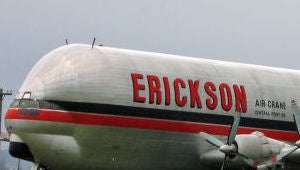
lol, that just cracked me up
 ttyymmnn
> LoganC
ttyymmnn
> LoganC
05/26/2015 at 16:52 |
|
And that’s just the Mini Guppy. This is the Super Guppy.
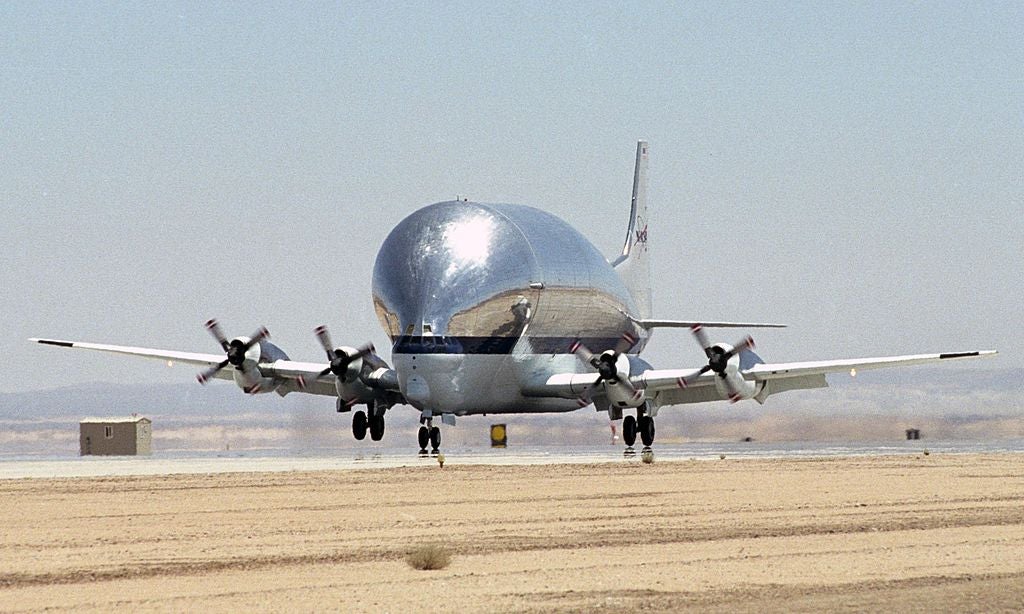
 grom-commando
> ttyymmnn
grom-commando
> ttyymmnn
05/26/2015 at 16:58 |
|
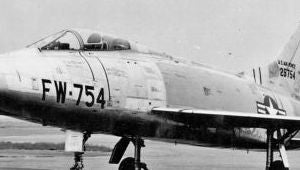
You can’t talk about the Hun without mentioning the infamous “Sabre Dance”.
 ttyymmnn
> grom-commando
ttyymmnn
> grom-commando
05/26/2015 at 17:01 |
|
Well, I prefer not to highlight events where people died, though it is certainly part of aviation history. I also can’t cover everything in such a limited format. Thanks for the info, though, and thanks for reading.
 CloudHackIX
> ttyymmnn
CloudHackIX
> ttyymmnn
05/26/2015 at 17:08 |
|
For anyone else curious: Adjusted to 2015 USD, the fine would be approximately $1,600,000. (Using usinflationcalculator.com)
 grom-commando
> ttyymmnn
grom-commando
> ttyymmnn
05/26/2015 at 17:12 |
|
Wasn’t intending to hightlight the death of Lt. Barty R. Brooks, just the other fatal flaw in the airframe outside of hydraulic failure.
 ttyymmnn
> grom-commando
ttyymmnn
> grom-commando
05/26/2015 at 17:45 |
|
I understand. As I pointed out to somebody else, the F-100 was by no means without its teething troubles, and that is no doubt an unfortunate result of the AF ordering the plane off the drawing board.
 ttyymmnn
> CloudHackIX
ttyymmnn
> CloudHackIX
05/26/2015 at 17:46 |
|
Thanks for the info. That still doesn’t seem like much, even in today’s dollars, for such a willful disregard for best practices.
 The Spaceman
> ttyymmnn
The Spaceman
> ttyymmnn
05/26/2015 at 18:08 |
|
This is a great format for sharing a variety of interesting info.
 ttyymmnn
> The Spaceman
ttyymmnn
> The Spaceman
05/26/2015 at 18:13 |
|
Thank you! And thanks for reading. Look for the next installment on Friday.
 Widget_Master
> ttyymmnn
Widget_Master
> ttyymmnn
05/26/2015 at 18:26 |
|
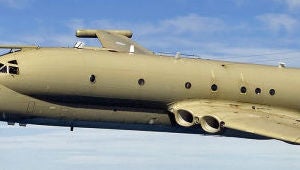
Just look at that bulbous behemoth.
 ttyymmnn
> Widget_Master
ttyymmnn
> Widget_Master
05/26/2015 at 18:32 |
|
I saw your comment and thought you were referring to the Mini Guppy. But yes, the Nimrod is indeed a strange looking aircraft. It’s amazing, though, just how long the Comet design lasted in that form. It definitely hearkens back to an earlier era.
 J Bonington Jagworth
> ttyymmnn
J Bonington Jagworth
> ttyymmnn
05/26/2015 at 18:47 |
|
That’s an interesting photo. The motorcycle the tech is standing on is definitely not a BMW. It’s a side valve single, and looks like a BSA M20, which is what the British army used mostly. I guess it was abandoned at Dunkirk and was used as a hack to get around the airfield.
 Hifrequency
> Widget_Master
Hifrequency
> Widget_Master
05/26/2015 at 18:49 |
|
Freaking awesome, I want to go up in that.
 ttyymmnn
> J Bonington Jagworth
ttyymmnn
> J Bonington Jagworth
05/26/2015 at 18:50 |
|
I’ll take your word for it. I’m an airplane guy, not a motorcycle guy. But I think it’s a fascinating vignette, a calm moment in the midst of war. The soldier with the helmet is carrying what looks like a document satchel, so you can wonder if he’s waiting to deliver something important. He certainly seems to be watching the repairs with some interest.
 SalsaShark
> ttyymmnn
SalsaShark
> ttyymmnn
05/26/2015 at 18:52 |
|
Surely THIS series won’t turn into a major time-suck. Ha! HA!
Great work, I’m eating this up. Please keep it up!
 GovtMinion
> ttyymmnn
GovtMinion
> ttyymmnn
05/26/2015 at 18:53 |
|
Loving these articles, keep it up! (That image of the Chicago crash though... god, that one’s hard to look at. Can’t imagine what was going through the minds of those poor people at that moment.)
 ttyymmnn
> SalsaShark
ttyymmnn
> SalsaShark
05/26/2015 at 18:54 |
|
Surely not! Actually, it takes more time than I really have, but it’s a labor of love. I’ve done enough that I’m getting hang of it, and the scheduled post feature really helps to get ahead. Thanks for the kind words; I’m glad you like it. The next one lands on Friday (it’s a Tuesday/Friday schedule). And I’m hoping to keep it up for an entire year! I need to get busy...
 SalsaShark
> ttyymmnn
SalsaShark
> ttyymmnn
05/26/2015 at 19:03 |
|
Could you use a hand with the prep work?
 ttyymmnn
> SalsaShark
ttyymmnn
> SalsaShark
05/26/2015 at 19:07 |
|
Thanks for the offer, but I’ve got a pretty good system ironed out.
 ttyymmnn
> SalsaShark
ttyymmnn
> SalsaShark
05/26/2015 at 19:12 |
|
There is a
Planelonik
tag that collects submissions for aviation-related content. Please post anything you’ve got to your personal blog or Oppo, and tag it for Planelopnik. There’s always room for more av geeks around here!
 Porschephile
> ttyymmnn
Porschephile
> ttyymmnn
05/26/2015 at 19:18 |
|
I have seen a Störch flying backwards in a 40kt headwind.
Negative ground speed FTW.
They also had to tie it down so it didn't blow away after it landed (in about 10 feet).
 J Bonington Jagworth
> ttyymmnn
J Bonington Jagworth
> ttyymmnn
05/26/2015 at 19:44 |
|
Agree about the vignette, although Helmet Guy looks a little staged. I’m certain its an M20 though. It’s missing the front mudguard, and it looks as if the toolbox lid is being held closed with a loop of something around the oil tank filler neck. I was a bit too specific about Dunkirk. The BEF was driven back through Belgium and Northern France, so it could have been abandoned anywhere along that route. It does give a clue about approximate time and location of the photo.
 Oosh
> ttyymmnn
Oosh
> ttyymmnn
05/26/2015 at 21:42 |
|
You could fill a whole article on the Nimrod and it’s sadly ignominious end.
 ttyymmnn
> Oosh
ttyymmnn
> Oosh
05/26/2015 at 21:52 |
|
I could write entire articles about
all
of these aircraft. As I said, it’s tough to keep it short, and I’m finding the articles getting longer and longer.
 Occams_rusty_razor
> ttyymmnn
Occams_rusty_razor
> ttyymmnn
05/26/2015 at 22:37 |
|
I always thought the Focke-Achgelis Fa-223 and the Flettner Fll 282 were first but just barely. The Fa-223 was the original choice of aircraft to be used to rescue Mussolini but the aircraft broke down en route.
https://en.wikipedia.org/wiki/Focke-Ach…
https://en.wikipedia.org/wiki/Flettner_…
 ttyymmnn
> Occams_rusty_razor
ttyymmnn
> Occams_rusty_razor
05/26/2015 at 22:55 |
|
There’s something to be said for redundancy. Thanks for the information.
 SALfan
> Widget_Master
SALfan
> Widget_Master
05/26/2015 at 23:24 |
|
Reminds me of a DC-3/C-47 the FL Division of Forestry modified to be a water tanker. Looked like it was about to give birth to a baby plane, or like it had a giant belly tumor.
 Oosh
> ttyymmnn
Oosh
> ttyymmnn
05/27/2015 at 02:35 |
|
True...
 Soused
> ttyymmnn
Soused
> ttyymmnn
05/27/2015 at 07:30 |
|
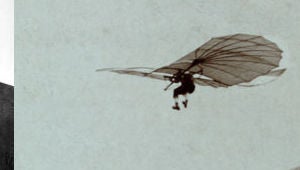
Otto Lillienthal was the first human being to fly (not float) on a regular basis. An underappreciated pioneer.
 Soused
> ttyymmnn
Soused
> ttyymmnn
05/27/2015 at 07:32 |
|
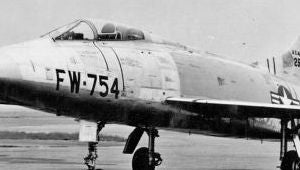
Used to see the over NW Connecticut all the time (ANG).
 Fl1ngstam
> ttyymmnn
Fl1ngstam
> ttyymmnn
05/27/2015 at 08:26 |
|
I still find it extraordinary that the RAF still had Shackletons in service in 1991
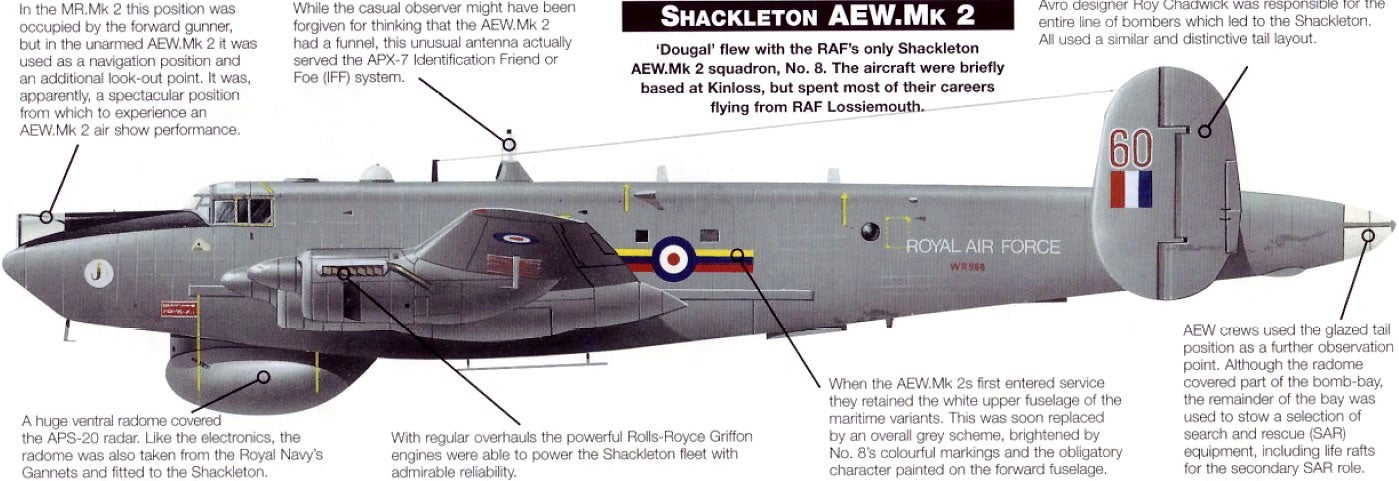
I mean, that’s like the USAF planning to keep using B-52s well into the middle of the 21st Century...
 ttyymmnn
> Fl1ngstam
ttyymmnn
> Fl1ngstam
05/27/2015 at 08:28 |
|
I mean, that’s like the USAF planning to keep using B-52s well into the middle of the 21st Century...

 Racescort666
> ttyymmnn
Racescort666
> ttyymmnn
05/27/2015 at 09:58 |
|
Maybe I’m wrong but can’t the FAA revoke flightworthiness certificates for improper maintenance?
 ttyymmnn
> Racescort666
ttyymmnn
> Racescort666
05/27/2015 at 10:23 |
|
I’m not sure, but I believe it goes back to my comment about the FAA’s dual role of policing and promoting the industry. I think the last thing the FAA would want to do is sideline and entire airline when they could address the problems through remediation and fines instead.
 rockingthe2
> ttyymmnn
rockingthe2
> ttyymmnn
05/27/2015 at 11:15 |
|
Posts Nimrod MR2 on #MR2sday, I am impressed.
 ttyymmnn
> rockingthe2
ttyymmnn
> rockingthe2
05/27/2015 at 11:16 |
|
Ha! I wish I could take credit for that, but I’m not that smart.
 rockingthe2
> ttyymmnn
rockingthe2
> ttyymmnn
05/27/2015 at 11:37 |
|
I’ve actually been thinking about putting one in one of my normal #MR2sday posts, just to see who would get it. Alternatively, getting a picture of my MR2 in front of an MR2 would be awesome as well.
 ttyymmnn
> rockingthe2
ttyymmnn
> rockingthe2
05/27/2015 at 12:10 |
|
Dooooo iiiiittttttt.......
And be sure to throw a Planelopnik tag on it.
 Margin Of Error
> ttyymmnn
Margin Of Error
> ttyymmnn
05/27/2015 at 12:11 |
|
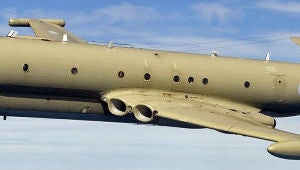
Is this plane based on the Comet ?
 rockingthe2
> ttyymmnn
rockingthe2
> ttyymmnn
05/27/2015 at 12:28 |
|
It’s not going to be easy to talk my way onto a british military base just to take a picture
 ttyymmnn
> rockingthe2
ttyymmnn
> rockingthe2
05/27/2015 at 13:00 |
|
True.
 ttyymmnn
> Margin Of Error
ttyymmnn
> Margin Of Error
05/27/2015 at 13:03 |
|
Yup. The Comet had passed its useful commercial life, and the first 2 Nimrods were built on uncompleted Comet 4C airframes.
 rockingthe2
> ttyymmnn
rockingthe2
> ttyymmnn
05/27/2015 at 14:39 |
|
“Hey! Can I take a picture of my car on tarmac with that plane?”
“Why?”
“Uhhhhh.... Their both MR2’s, duh”
“Sir, I’m going to have to ask you to leave”
 iCowboy
> ttyymmnn
iCowboy
> ttyymmnn
05/27/2015 at 15:50 |
|
Incredible - if the Nimrod project hadn’t finally been killed a few years ago, we’d be producing new fuselages based on a plane that flew fifty years ago.
 ttyymmnn
> iCowboy
ttyymmnn
> iCowboy
05/27/2015 at 16:00 |
|
I wonder, though, if it would have been a project similar to the F/A-18 Super Hornet, a plane that looks like an enlarged Hornet but is, in reality, an entirely new airplane.
 Widget_Master
> ttyymmnn
Widget_Master
> ttyymmnn
05/27/2015 at 17:39 |
|
Yeah I guess the Mini Guppy would be considered even more bulbous haha.
 EatherDwellerNYC15
> Brickman
EatherDwellerNYC15
> Brickman
05/28/2015 at 03:01 |
|
These were awesome. 4 20mm cannon under the fuselage, 4 .50cal’s in the top turret. 3 man crew. It was technically a fighter but was the size of a b-25. In practice they were painted all black for night use. the radar operator was in the rear glass area. IIRC.
 iCowboy
> ttyymmnn
iCowboy
> ttyymmnn
05/28/2015 at 12:12 |
|
For the money that BAE was charging the British taxpayer I’d have hoped it was a new plane - made of gold.
 SchportWagen
> Racescort666
SchportWagen
> Racescort666
05/31/2015 at 21:22 |
|
I thought they were able to ground entire models of airplanes if deemed necessary. I recall watching an episode of Air Emergency where the identified problem was stripped elevator jack screws on DC-9s. I seem to recall DC-9s were grounded on some scale for the jack screws to be inspected.
 aet4016
> Porschephile
aet4016
> Porschephile
01/05/2016 at 04:26 |
|
I remember my father telling me about flying in his Piper Cub, slowing down over a highway, then seeing all the cars overtaking him!
 Porschephile
> aet4016
Porschephile
> aet4016
01/05/2016 at 06:50 |
|
I had that in southern Germany in a 172 with a headwind between Munich and Nuremberg - we were faster than the trucks but some of those Autobahn-munching BMWs and Audis were doing maybe twice our ground speed!